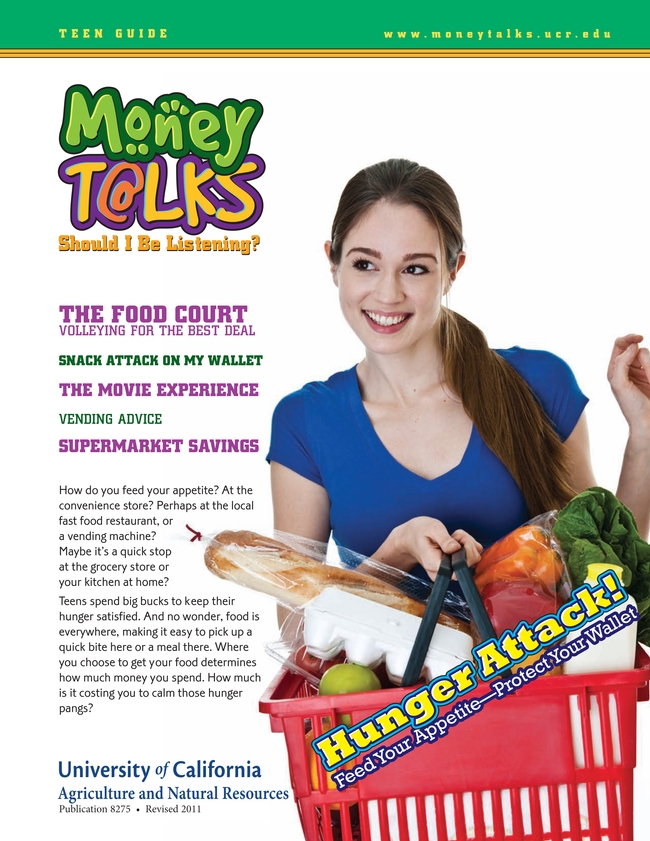
Because studies show that the habits we start early in life often carry into adulthood, UC Cooperative Extension reaches out to teenagers to develop money-management skills with a program called Money Talks. After completing the UC Money Talks program, teens are more likely to find easy ways to save money.
One feature of Money Talks helps teens improve their eating habits at the same time they work on their financial health. “Hunger Attack!” teaches youth how to buy food and save money.
This curriculum was developed to address connections between poverty and childhood obesity, explained Katherine Soule, UC Cooperative Extension advisor for youth, families and communities in San Luis Obispo and Santa Barbara counties.
“When young people are hungry, they are likely to buy food from the most convenient location,” said Soule. “That could be a fast food restaurant or a vending machine, rather than buying nutritious food at a lower price at a grocery store.”
The Hunger Attack program suggests writing a list of the food items purchased and the price so teens can see how the expenses add up. They may reconsider whether they really need to buy an after-school snack.
“We designed Hunger Attack to provide the teens with consumer facts, as well as develop their decision-making and reasoning skills to make the best nutrition decisions for themselves while making good financial choices,” Soule said. “In other words, we're teaching teens to look for the best nutritional value for their food dollars.”

Money Talks provides money management techniques in magazine-style teen guides and an interactive website that features educational games and quizzes. The topics include money personality, easy ways to save money, shopping skills, car costs, developing skills for the workplace, buying snacks, savings accounts, checking accounts, e-banking, obtaining credit and credit cards.
Here's a sample quiz question:
The best time to go grocery shopping is when:
A. I'm really hungry.
B. I'm not hungry.
C. Everyone else is going
The answer is B. You're likely to buy more food when shopping on an empty stomach.
There is also a classroom curriculum for teachers, with leader's guides to accompany each of the teen guides. The leader's guides contain learning objectives; background information; discussion questions; activities with handouts, visuals, and links to the web site; a glossary of important terms; and additional resources. All of the materials are available in English and Spanish.
For more information, visit the Money Talks website at http://moneytalks4teens.ucanr.edu.